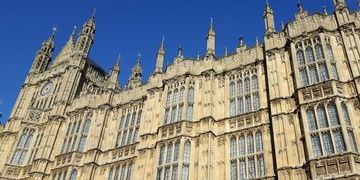An initial look at the SET stats out today including new details on how departments spend their R&D budgets
Beyond the science budget: Departmental R&D
15 Jun 2017
Isn’t it exciting when you find a new tab in a spreadsheet? (tumbleweed…) Well it was with great interest that I saw the latest version of the Government’s expenditure on science, engineering and technology (SET stats) release now gives a bit more detail on how department’s R&D funding is used. Over a few years CaSE has used these data releases to keep tabs on spending on R&D right across government departments – there were some serious disproportionate cuts to departmental R&D in the early years of the coalition as reported on in 2012 and 2014 with some signs of improvement in the 2016 figures.
This release now gives us a complete picture of SET spending in departments across the 2010-2015 parliament. The graphs below show the changes in the biggest 5 departments by spend on SET, and the other departments. The obvious remark is that spend on SET has fared very differently across deparmtments. But the overall figures mask a widespread disinvestment but with large increases in BIS and to a lesser extent DH. (below graphs are in constant prices and from today’s SET stats release from ONS)


New detail on how departments spend R&D budgets
But beyond the headline amounts, they now tell us how much funding is for in house R&D or for externally funded R&D. There is also a section that looks at whether the funding is used for general research, government services, policy research or technology research. What type of activity departmental R&D budgets fund has to date proved tricky to unpick. So it is great that this additional layer of information is now collected and published. There’s lots to look into which we’ll do in more depth soon.
ONS statistical bulletin
In the mean-time, the ONS now do a great digest to accompany the data release. For ease, I’ve pulled out some of their headlines below. There’s lots to delve into, but in general this is a really helpful breakdown as it gives us more insight into how departments use their R&D funding.
View from the top
“Government spending on science, engineering and technology has been growing over time, in real terms. However, it has been falling as a share of GDP – down from over 0.8% in 2004 to 0.6% in 2015.”
Daniel Groves, National Accounts and Economic Statistics, Office for National Statistics
Composition of UK government expenditure on science, engineering and technology, 2015

A look at Research Councils and Funding Councils
“Expenditure on science, engineering and technology (SET) by Research Councils was £3.4 billion in 2015. This was down £24.7 million (1%) since 2014. In constant prices, this was a rise of £0.4 billion (15%) since 2004.”
“In 2015, expenditure on SET by HEFCs was £2.3 billion, a decrease of £88.0 million (4%) since 2014. In constant prices, this was a decrease of £105.4 million (4%) since 2014 and an increase of £28.7 million (1%) since 2004. This was in contrast to the decrease from the peak of £2.6 billion in 2009.”
By department
“The UK government owns many research institutes and laboratories that carry out research and development (R&D), which are managed by various government departments. It also uses a range of suppliers with facilities to carry out research, both inside and outside the UK.
In 2015, expenditure by civil departments on science, engineering and technology (SET) was £3.1 billion, showing growth of £86.8 million (3%) since 2014. In constant prices, the growth since 2004 was 27%. In 2015, four departments contributed £2.8 billion (88%) to the total.”
Breakdown of UK government civil departments’ expenditure on science, engineering and technology, 2015

Related resources

This synthesis draws out key policy implications from the findings of a report commissioned by the British Academy and CaSE. The systems-based analysis of the strengths and weaknesses within the UK’s innovation system, ‘From Research to Productivity: A Systems Analysis of UK Innovation Pathways’, was conducted by Cambridge Econometrics.

In 2024, the British Academy and CaSE commissioned Cambridge Econometrics and the Innovation and Research Caucus to conduct this systems-based analysis of the strengths and weaknesses within the UK’s innovation system.

CaSE’s comprehensive analysis of the measures that impact R&D announced in the 2025 Spending Review

CaSE’s response to the House of Lords Science, Innovation and Technology Select Committee inquiry into: Financing and Scaling UK Science and Technology: Innovation, Investment, Industry.